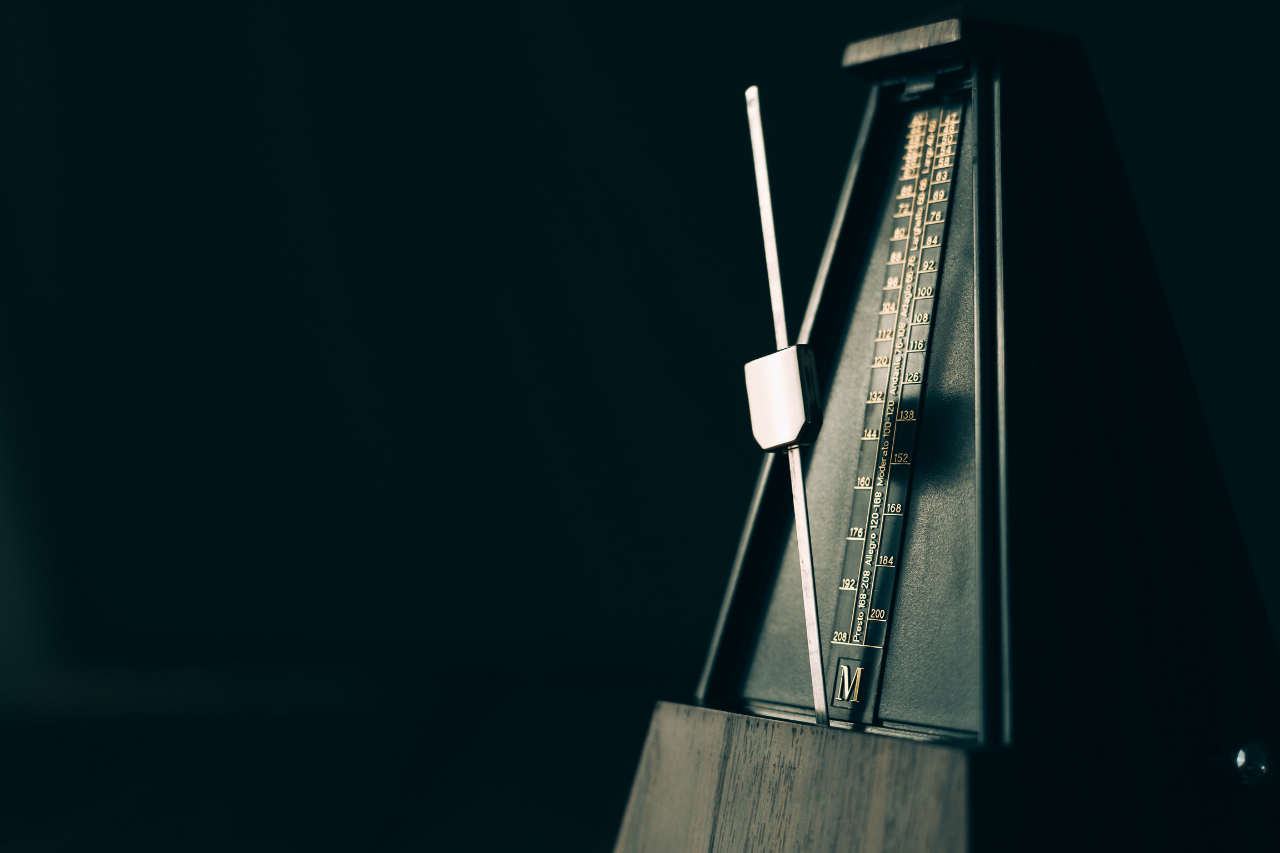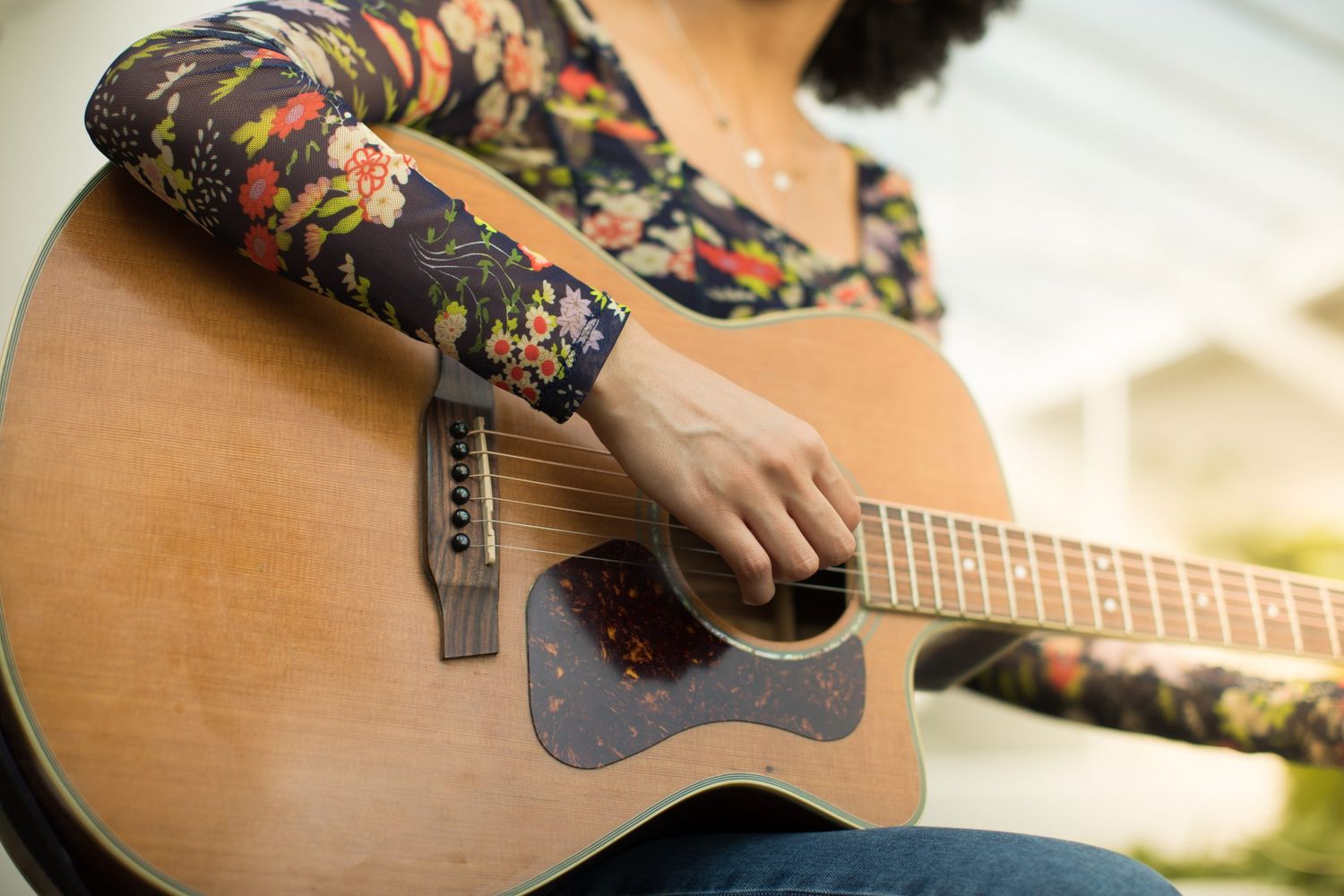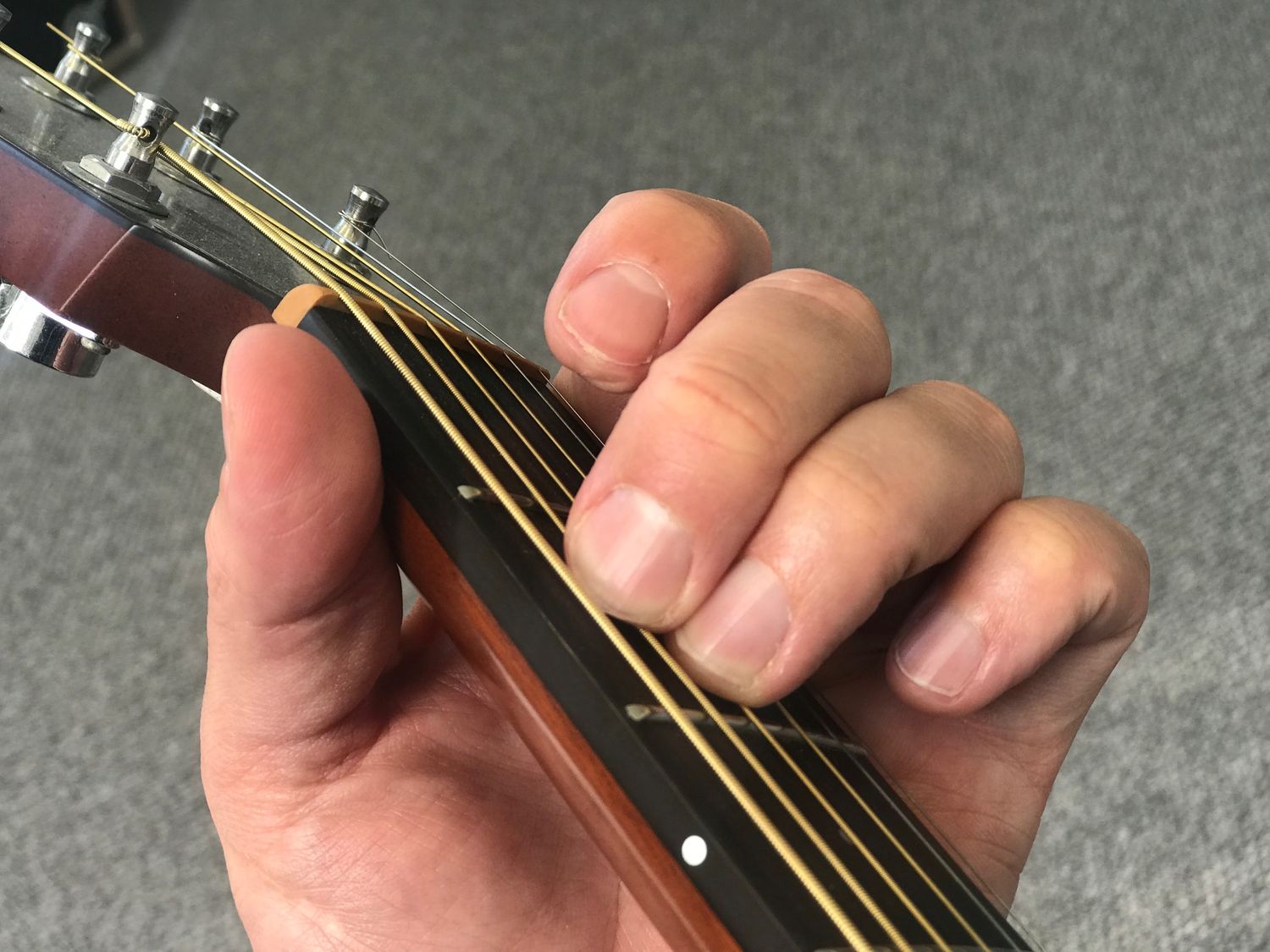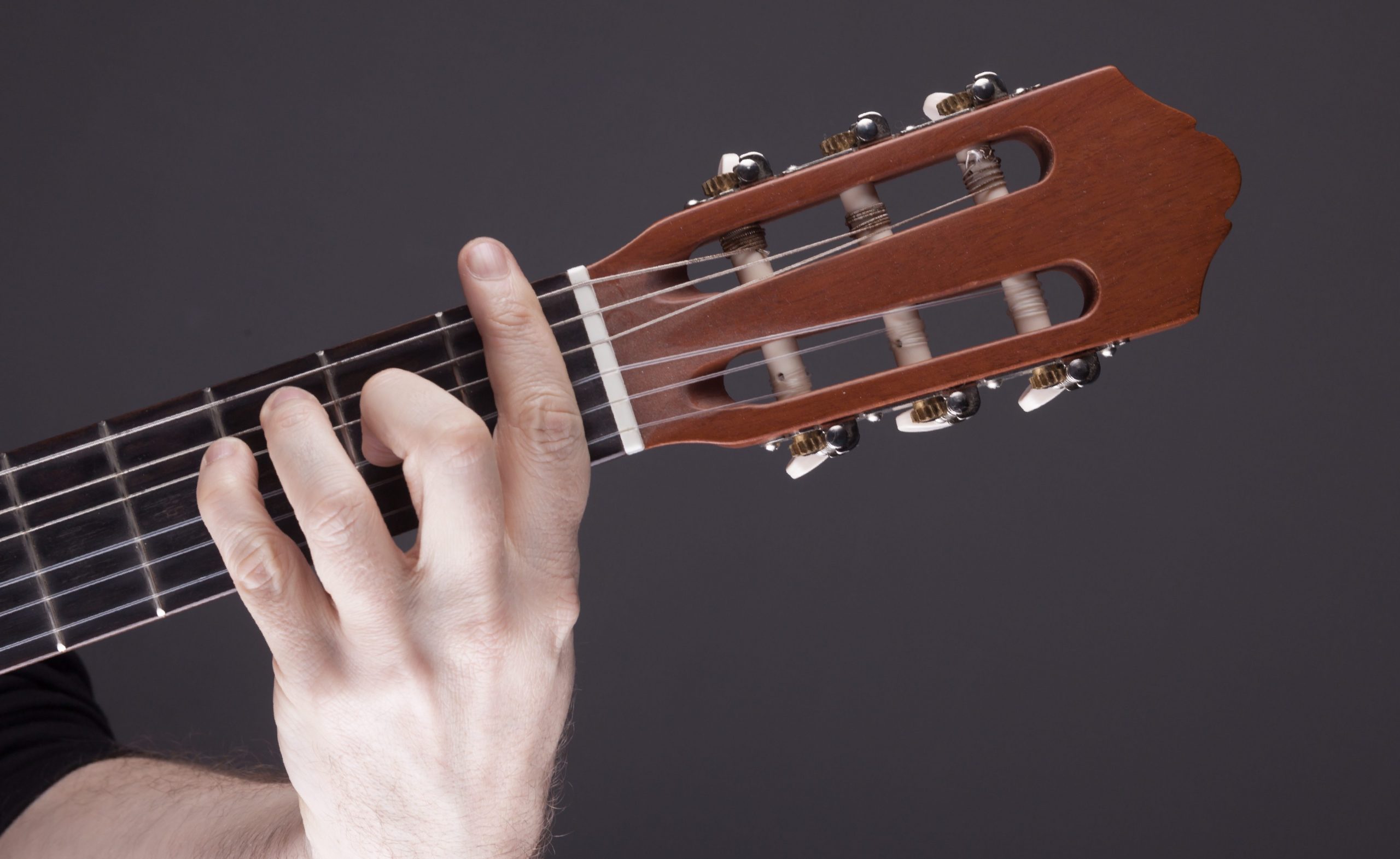Home>Instruments>Guitar>How To Practice Playing Guitar
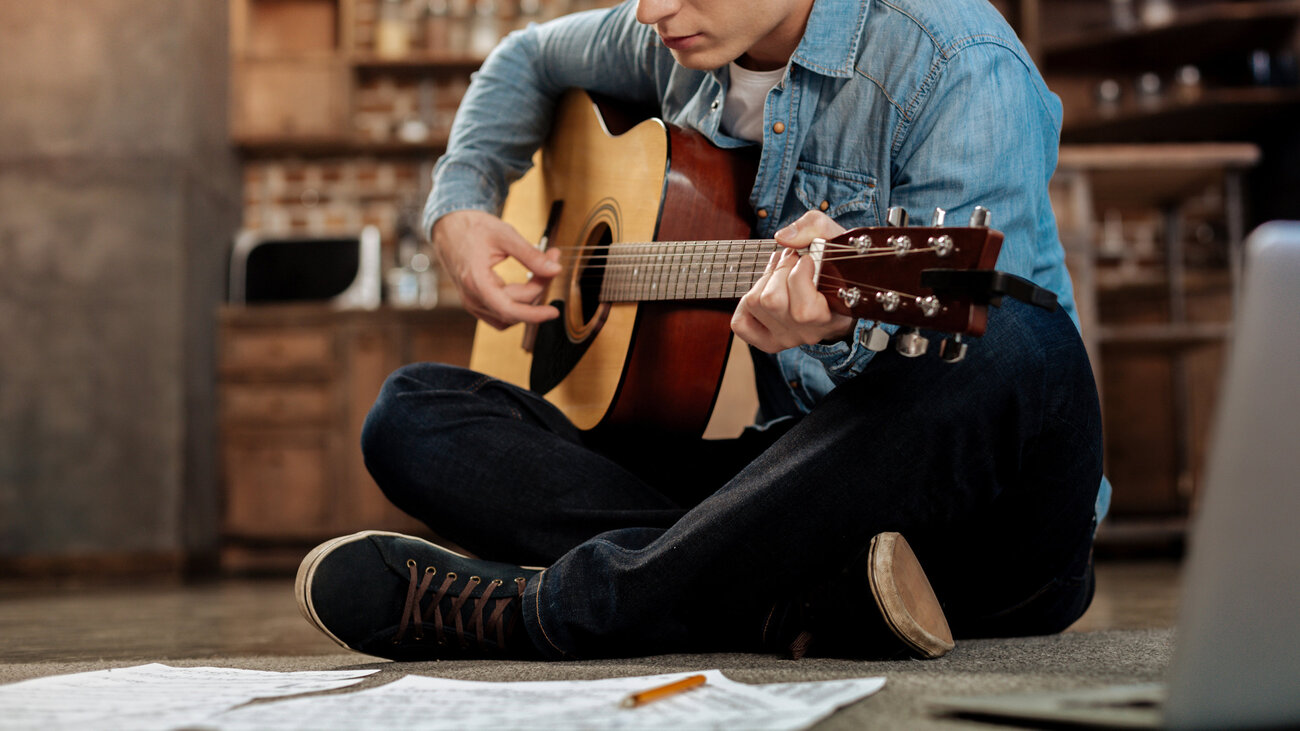

Guitar
How To Practice Playing Guitar
Published: February 14, 2024
Learn how to practice playing guitar with our expert tips and techniques. Master the art of guitar playing and improve your skills today.
(Many of the links in this article redirect to a specific reviewed product. Your purchase of these products through affiliate links helps to generate commission for AudioLover.com, at no extra cost. Learn more)
Table of Contents
Introduction
Learning to play the guitar is an exciting journey that offers a gateway to expressing creativity and emotion through music. Whether you're a beginner picking up a guitar for the first time or an intermediate player looking to refine your skills, effective practice is essential for progress. In this comprehensive guide, we'll explore valuable tips and techniques to enhance your guitar practice sessions, helping you develop into a proficient and confident player.
Practicing the guitar is not just about repetition; it's about deliberate and focused effort to improve specific aspects of your playing. By incorporating structured practice routines, mastering essential techniques, and honing your musicality, you can elevate your guitar playing to new heights. This guide will provide insights into setting up an ideal practice space, creating a well-rounded practice routine, mastering warm-up exercises, learning chords and scales, refining techniques, playing songs, and improving your timing and rhythm. Additionally, we'll share valuable tips to ensure that your practice sessions are effective, enjoyable, and conducive to continuous improvement.
Embarking on this musical journey requires dedication, patience, and a genuine passion for the instrument. As you delve into the world of guitar practice, remember that progress is a gradual process, and each practice session contributes to your growth as a musician. So, grab your guitar, embrace the joy of learning, and let's dive into the art of practicing the guitar.
Getting Started with Guitar Practice
Before delving into the intricacies of guitar practice, it’s important to establish a strong foundation. As a beginner, familiarizing yourself with the instrument is the initial step. Get comfortable holding the guitar, understand the basic anatomy of the instrument, and explore the different sounds produced by strumming the strings. For those with some experience, revisiting fundamental techniques can serve as a valuable refresher.
Understanding the significance of proper posture and hand placement is crucial. Sit or stand in a relaxed yet upright position, ensuring that the guitar is comfortably nestled against your body. This facilitates ease of movement and minimizes strain during extended practice sessions. Additionally, familiarize yourself with the numbering of the guitar frets and strings, as this knowledge forms the basis for learning chords, scales, and melodies.
As you acquaint yourself with the guitar, take the time to tune the instrument. An in-tune guitar ensures that the notes and chords you practice resonate harmoniously, contributing to a more enjoyable and rewarding practice experience. Utilize a digital tuner or a tuning app to achieve accurate tuning, or consider investing in a clip-on tuner for added convenience.
For beginners, it’s beneficial to explore the various types of guitars available, such as acoustic, electric, classical, or bass guitars, to identify the instrument that aligns with your musical preferences and playing style. Understanding the distinctions between these instruments can aid in making an informed decision when selecting a guitar to begin your musical journey.
Lastly, cultivate a positive and patient mindset as you embark on your guitar practice endeavors. Embrace the learning process, celebrate small victories, and remain open to continuous growth and improvement. With a solid foundation and a willingness to learn, you’re primed to embark on a fulfilling and rewarding guitar practice journey.
Setting Up Your Practice Space
Creating an inviting and conducive practice space is essential for fostering a productive and enjoyable guitar practice routine. Whether you have a dedicated music room or a cozy corner in your home, optimizing your practice environment can significantly enhance your focus and motivation.
Begin by ensuring that your practice area is well-lit and adequately ventilated. Natural light can uplift your mood and energy levels, while proper ventilation ensures a comfortable and refreshing atmosphere during extended practice sessions. Additionally, consider incorporating indoor plants or personal mementos to infuse the space with a touch of inspiration and positivity.
Organizing your practice space in a clutter-free manner can minimize distractions and promote a sense of calm and serenity. Arrange your music stand, guitar accessories, and learning materials neatly to streamline your practice sessions and create a visually appealing environment that beckons you to pick up your guitar and play.
Investing in a comfortable chair or stool is paramount for maintaining good posture and physical comfort during practice. Proper seating promotes spinal alignment and reduces the risk of discomfort or strain, allowing you to focus on refining your guitar skills without the hindrance of physical discomfort.
Consider the acoustics of your practice space, especially if you’re using an acoustic guitar. Opt for a room with favorable acoustics or introduce acoustic panels or sound-dampening materials to minimize unwanted reverberations and create a balanced sound environment. This attention to acoustics can enhance the clarity and resonance of your guitar playing, contributing to a more immersive practice experience.
Personalizing your practice space with musical artwork, motivational quotes, or a vision board depicting your musical aspirations can inspire and uplift your spirits as you engage in practice. Surrounding yourself with elements that resonate with your musical journey can kindle a sense of passion and dedication, reinforcing your commitment to regular and focused guitar practice.
By thoughtfully curating and organizing your practice space, you can cultivate an environment that beckons you to pick up your guitar and immerse yourself in the joy of practice. A well-appointed practice space not only enhances your playing experience but also serves as a sanctuary where musical creativity flourishes.
Developing a Practice Routine
Establishing a structured and consistent practice routine is pivotal for honing your guitar skills and nurturing steady progress. A well-crafted practice routine not only cultivates discipline but also ensures that you dedicate focused time to various aspects of guitar playing, fostering a comprehensive and balanced development of your musical abilities.
Begin by setting aside dedicated time slots for practice sessions in your daily or weekly schedule. Consistency is key, and allocating regular practice time reinforces the habit of engaging with the instrument, facilitating steady improvement over time. Whether it’s a brief daily session or longer practice periods a few times a week, find a rhythm that aligns with your lifestyle and commitments.
Divide your practice routine into distinct segments, each focusing on different facets of guitar playing. Allocate time for technical exercises, chord and scale practice, learning new songs, improvisation, and ear training. This structured approach ensures that you address various aspects of playing, fostering a well-rounded skill set.
Embrace variety within your practice routine to maintain engagement and prevent monotony. Integrate exercises that enhance finger dexterity, coordination, and strength, alongside activities that nurture musicality, such as exploring different playing styles, experimenting with tone, and delving into music theory. This diversity not only enriches your playing but also sustains your enthusiasm for practice.
Set specific goals for each practice session, whether it’s mastering a new chord progression, refining a challenging technique, or memorizing a section of a song. Clear objectives provide direction and motivation, guiding your practice sessions towards tangible and fulfilling accomplishments.
Adapt your practice routine to accommodate your evolving skills and musical aspirations. As you progress, incorporate advanced techniques, diverse musical genres, and more complex musical arrangements into your practice regimen. Flexibility and adaptability ensure that your practice routine remains dynamic and tailored to your ongoing growth as a guitarist.
Remember to embrace patience and persistence as you adhere to your practice routine. Progress may unfold gradually, but each dedicated practice session contributes to your development as a musician. By nurturing a consistent and purposeful practice routine, you lay the groundwork for continuous improvement and a deeply fulfilling musical journey.
Warm-Up Exercises
Before delving into the core elements of your practice session, incorporating effective warm-up exercises is essential for preparing your fingers, hands, and mind for focused guitar playing. Warm-up exercises not only limber up your muscles and joints but also enhance coordination, dexterity, and overall playing comfort, setting the stage for a productive and enjoyable practice experience.
Commence your warm-up routine with gentle stretching exercises for your fingers, wrists, and forearms. Perform circular motions with your wrists, flex and extend your fingers, and gently massage your forearms to alleviate any tension or stiffness. These simple yet effective stretches promote flexibility and reduce the risk of strain during intensive playing.
Following the stretches, engage in finger exercises to bolster agility and strength. Utilize simple finger patterns, such as chromatic runs or sequential finger combinations, across the fretboard to promote nimble finger movements and enhance finger independence. Gradually increase the speed and complexity of these exercises as your fingers become more responsive and adept.
Incorporate fingerstyle exercises, arpeggios, or scale sequences into your warm-up routine to refine right-hand dexterity and precision. These exercises not only prime your picking hand for intricate patterns and techniques but also cultivate a nuanced control over the dynamics and articulation of your playing.
After addressing finger agility, focus on left-hand exercises to fortify fretting hand dexterity. Practicing scale fragments, legato patterns, and chord progressions hones left-hand coordination and promotes seamless transitions between fretting positions, laying the groundwork for fluid and effortless chord changes and melodic phrasing.
Integrate rhythmic exercises into your warm-up routine to enhance timing and pulse awareness. Utilize metronomes or drum tracks to practice strumming patterns, picking exercises, or rhythmic chord progressions, fostering a solid sense of groove and rhythmic precision from the outset of your practice session.
Finally, engage in ear training exercises to sharpen your auditory perception and melodic recognition. Play simple melodies by ear, identify intervals, or practice call-and-response exercises to refine your ability to discern pitch, recognize musical patterns, and internalize musical phrases effectively.
By diligently incorporating these warm-up exercises into your practice routine, you prepare your mind and body for focused and effective guitar playing. These preparatory exercises not only mitigate the risk of strain and injury but also lay the foundation for a rewarding and enriching practice session, allowing you to delve into your musical pursuits with confidence and ease.
Learning Chords and Scales
Mastering chords and scales forms the bedrock of proficient guitar playing, empowering you to navigate diverse musical styles, compose captivating melodies, and accompany songs with finesse. Whether you’re a novice embarking on your guitar journey or an intermediate player seeking to expand your harmonic and melodic vocabulary, dedicating focused practice to chords and scales is instrumental in honing your musical prowess.
Begin by familiarizing yourself with fundamental open chords, such as C, G, D, E, and A major, as well as their minor counterparts. Practice transitioning between these chords fluidly, ensuring clarity and precision in each shape. Additionally, delve into basic barre chords, which unlock a plethora of chord variations across the fretboard, enriching your harmonic palette and enabling you to play in different keys and tonalities.
Explore scales, starting with the foundational pentatonic scale and the major and minor scales. Acquaint yourself with the patterns and fingerings of these scales across various positions on the fretboard, gradually building speed and fluency. Understanding scales equips you with the tools to craft melodic phrases, improvise solos, and comprehend the underlying structure of melodies and harmonies.
As you delve deeper into chord and scale practice, venture into extended and altered chord voicings, such as seventh, ninth, and suspended chords, expanding your harmonic palette and infusing your playing with rich and expressive tonal colors. Similarly, embrace modal scales and exotic scales to imbue your musical expressions with evocative and diverse tonalities, fostering a nuanced and exploratory approach to guitar playing.
Integrate chord progressions and scale sequences into your practice routine to contextualize your learning within musical contexts. Experiment with common chord progressions across different genres, such as the ubiquitous I-IV-V progression in blues and rock, or the emotive vi-IV-I-V sequence in pop and ballad styles. Likewise, explore scale sequences and patterns to internalize the nuances of each scale, fostering a deeper understanding of melodic construction and phrasing.
Embrace the synergy between chords and scales, recognizing their interplay in crafting compelling musical compositions and improvisations. As you refine your command over chords and scales, you fortify the foundation of your musical fluency, empowering you to express your musical ideas with confidence, creativity, and authenticity.
Practicing Techniques
Deliberate and focused practice of guitar techniques is paramount for refining your playing, expanding your expressive capabilities, and nurturing a versatile command over the instrument. By dedicating time to mastering essential techniques, you elevate your musical proficiency and cultivate a dynamic and engaging approach to guitar playing.
Commence your technique practice by honing fundamental skills such as fretting hand dexterity, picking accuracy, and string articulation. Embrace exercises that target these foundational skills, gradually increasing the complexity and speed of the exercises as your proficiency grows. This deliberate approach fosters precision and control, laying a robust groundwork for advanced techniques.
Explore alternate picking, economy picking, and hybrid picking techniques to diversify your picking arsenal and navigate intricate rhythmic patterns and melodic passages with finesse. By refining your picking techniques, you enhance the clarity, speed, and fluidity of your playing, facilitating seamless execution of intricate musical phrases.
Dedicate focused practice to legato techniques, including hammer-ons, pull-offs, and slides, to infuse your playing with fluidity, expressiveness, and dynamic range. These techniques imbue your melodies and solos with a nuanced and emotive character, enabling you to convey intricate musical nuances with finesse.
Embrace the intricacies of fingerstyle techniques, delving into fingerpicking patterns, thumb independence exercises, and chord-melody arrangements. Cultivating fingerstyle proficiency not only expands your sonic palette but also nurtures a tactile and intimate connection with the instrument, enabling you to craft evocative and resonant musical expressions.
Embark on the exploration of bending, vibrato, and sliding techniques to imbue your playing with emotive phrasing and expressive flair. These techniques infuse your melodies and solos with a vocal-like quality, enabling you to convey poignant and captivating musical narratives through nuanced and evocative playing.
Integrate tapping, harmonics, and percussive techniques into your practice regimen, expanding your sonic repertoire and fostering a dynamic and inventive approach to guitar playing. These unconventional techniques not only add textural depth and intrigue to your playing but also invite experimentation and innovation, nurturing a bold and exploratory musical spirit.
By immersing yourself in the deliberate and focused practice of essential guitar techniques, you sharpen your musical acumen, expand your expressive palette, and cultivate a versatile and compelling approach to guitar playing. Each technique mastered enriches your musical vocabulary, empowering you to articulate your musical ideas with precision, passion, and boundless creativity.
Playing Songs
Embarking on the journey of learning and playing songs on the guitar is a deeply rewarding and fulfilling endeavor, offering a tangible avenue for applying and honing your musical skills while immersing yourself in the joy of musical expression. Whether you’re drawn to strumming timeless classics, unraveling intricate fingerstyle arrangements, or delving into the realms of rock, blues, pop, or folk, playing songs is a gateway to experiencing the sheer delight of bringing music to life through your instrument.
Begin by selecting songs that resonate with your musical tastes and aspirations, encompassing a range of genres, tempos, and playing styles. Choose pieces that inspire and captivate you, fostering a deep sense of connection and enthusiasm as you embark on the learning journey. Whether it’s iconic riffs, emotive ballads, or infectious rhythms, seek out songs that kindle your musical passion.
As you delve into learning songs, pay attention to the song structure, chord progressions, and rhythmic patterns, gradually internalizing the nuances of each piece. Focus on mastering the core elements of the song, including chord transitions, strumming or picking patterns, and melodic motifs, ensuring that you capture the essence of the composition with authenticity and finesse.
Embrace the art of ear training by learning songs by ear, honing your ability to decipher melodies, chord progressions, and rhythmic nuances directly from the recordings. This immersive approach not only enhances your musical perception but also fosters a deep understanding of musical phrasing and dynamics, enriching your interpretative skills and musical sensibilities.
Explore the wealth of online resources, including chord charts, tablature, and instructional videos, to augment your learning process. These resources provide valuable insights into song interpretation, technique nuances, and performance tips, empowering you to approach each song with confidence and insight.
As you progress, infuse your interpretations with personal flair and creativity, experimenting with variations in chord voicings, embellishments, and rhythmic nuances to imbue the songs with your unique musical identity. Embrace the opportunity to reinterpret songs, adding your artistic imprint and infusing the music with your individuality.
Playing songs on the guitar not only hones your technical proficiency but also nurtures your musicality, fostering a deep appreciation for melody, harmony, and rhythm. Each song mastered represents a milestone in your musical journey, encapsulating the joy of musical expression and the transformative power of music to captivate, inspire, and resonate deeply within the hearts of listeners.
Improving Your Timing and Rhythm
Achieving precision in timing and rhythm is a cornerstone of proficient guitar playing, underpinning the foundation of musical cohesion, expressive phrasing, and seamless ensemble performance. Cultivating a keen sense of timing and rhythmic accuracy not only elevates your individual playing but also enhances your ability to collaborate with other musicians and immerse yourself in diverse musical contexts with confidence and finesse.
Begin by acquainting yourself with fundamental rhythmic concepts, including time signatures, note durations, and rhythmic subdivisions. Develop an intuitive understanding of common time signatures such as 4/4, 3/4, and 6/8, and familiarize yourself with rhythmic values such as whole notes, half notes, quarter notes, and their corresponding rests.
Integrate metronome practice into your daily routine to fortify your internal sense of time and pulse. Commence with a comfortable tempo and gradually increase the speed as you refine your rhythmic precision. Utilize the metronome as a steadfast guide, aligning your playing with the steady pulse to cultivate unwavering rhythmic accuracy.
Engage in rhythmic exercises such as strumming patterns, syncopated rhythms, and rhythmic displacement to enhance your rhythmic versatility and agility. These exercises not only foster a dynamic and expressive approach to rhythm but also sharpen your ability to navigate complex rhythmic motifs with confidence and clarity.
Explore diverse musical genres and styles to immerse yourself in varied rhythmic sensibilities. From the infectious grooves of blues and funk to the intricate polyrhythms of world music and the dynamic pulse of rock and jazz, each genre offers a distinct rhythmic landscape that enriches your rhythmic vocabulary and fosters adaptability in diverse musical settings.
Embrace the art of ensemble playing, whether through jam sessions, collaborations with other musicians, or backing tracks. Engaging in ensemble settings hones your ability to synchronize with other instruments, internalize groove dynamics, and respond intuitively to the rhythmic nuances of the music, fostering a cohesive and compelling musical interplay.
Cultivate a nuanced approach to dynamics and articulation, infusing your playing with subtle accents, ghost notes, and rhythmic embellishments to imbue the music with depth and vitality. Pay attention to the interplay between silence and sound, harnessing rests and pauses to punctuate the rhythmic fabric with expressive punctuation.
By immersing yourself in the deliberate and focused practice of timing and rhythm, you refine your musical sensibilities, elevate your ensemble skills, and infuse your playing with a captivating rhythmic vitality. Each rhythmic nuance mastered not only enhances your individual proficiency but also enriches your musical interactions, fostering a dynamic and engaging musical dialogue with fellow musicians and audiences alike.
Tips for Effective Guitar Practice
Embarking on a journey of effective guitar practice entails embracing mindful and purposeful approaches that maximize productivity, foster continual growth, and ignite a deep passion for musical expression. By integrating these tips into your practice regimen, you can cultivate a nurturing and enriching practice experience that propels your musical development and sustains your enthusiasm for the instrument.
- Set Clear Objectives: Establish specific practice goals for each session, whether it’s mastering a new technique, learning a song, or refining a challenging passage. Clear objectives provide direction and motivation, guiding your practice sessions towards tangible and fulfilling accomplishments.
- Embrace Consistency: Dedicate regular time slots for practice in your schedule, fostering a consistent practice routine that reinforces the habit of engaging with the instrument. Whether it’s brief daily sessions or longer practice periods a few times a week, find a rhythm that aligns with your lifestyle and commitments.
- Focus on Quality Over Quantity: Prioritize focused and attentive practice over extended durations. Concentrated practice segments that prioritize precision and musicality yield more significant progress than prolonged, unfocused sessions.
- Practice Mindfully: Engage in deliberate and mindful practice, maintaining acute awareness of your playing, technique, and musical expression. Mindful practice fosters a deep connection with the music and cultivates a nuanced and expressive approach to playing.
- Seek Guidance: Embrace the wealth of online resources, instructional materials, and tutorials to augment your learning process. Additionally, consider seeking guidance from a qualified instructor to receive personalized feedback and tailored guidance that accelerates your progress.
- Embrace Variation: Integrate diverse practice elements, including technical exercises, chord and scale practice, song learning, and improvisation, to maintain engagement and prevent monotony. Embracing variety within your practice routine sustains your enthusiasm and fosters a well-rounded skill set.
- Record and Reflect: Utilize recording tools to capture your practice sessions, enabling you to review your playing, identify areas for improvement, and track your progress over time. Reflective practice fosters self-awareness and empowers you to refine your playing with precision and insight.
- Cultivate Patience: Embrace patience and persistence as you navigate the learning process. Recognize that progress unfolds gradually, and each dedicated practice session contributes to your development as a musician. Cultivating patience nurtures a resilient and enduring commitment to musical growth.
By integrating these tips into your guitar practice routine, you foster an environment of purposeful and rewarding practice, nurturing a deep and enduring connection with the instrument and igniting a profound passion for musical exploration and expression.
Conclusion
Congratulations on embarking on the enriching and transformative journey of guitar practice. As you navigate the intricacies of refining your playing, cultivating musical fluency, and nurturing a deep connection with the instrument, remember that each practice session is a step forward in your musical evolution. The art of practicing the guitar transcends mere repetition; it embodies a profound commitment to growth, a celebration of creativity, and an unwavering passion for musical expression.
By setting up a conducive practice space, developing a structured practice routine, and delving into essential techniques, chords, scales, and rhythmic nuances, you have laid the groundwork for a comprehensive and fulfilling musical journey. Embrace the joy of learning songs, honing your timing and rhythm, and infusing your playing with personal flair and creativity, recognizing that each practice endeavor contributes to your musical tapestry.
As you navigate the ebbs and flows of practice, remember to celebrate small victories, embrace the learning process with patience, and remain open to continuous growth and exploration. Each note you play, each technique you master, and each song you interpret encapsulates the essence of your musical journey, reflecting your dedication, perseverance, and unwavering love for the guitar.
Embrace the multifaceted nature of guitar practice, infusing each session with mindfulness, purpose, and an unyielding passion for musical expression. Whether you aspire to strum captivating melodies, unravel intricate solos, or compose evocative compositions, your dedication to practice serves as the catalyst for realizing your musical aspirations and fostering a profound and enduring connection with the instrument.
As you continue to refine your playing and immerse yourself in the boundless realms of musical exploration, remember that the art of practicing the guitar is a testament to your commitment to musical excellence, your unwavering passion for creativity, and your profound love for the transformative power of music. Embrace each practice session as an opportunity for self-discovery, artistic expression, and unbridled musical joy, knowing that your dedication to practice paves the way for a deeply fulfilling and enduring musical odyssey.



